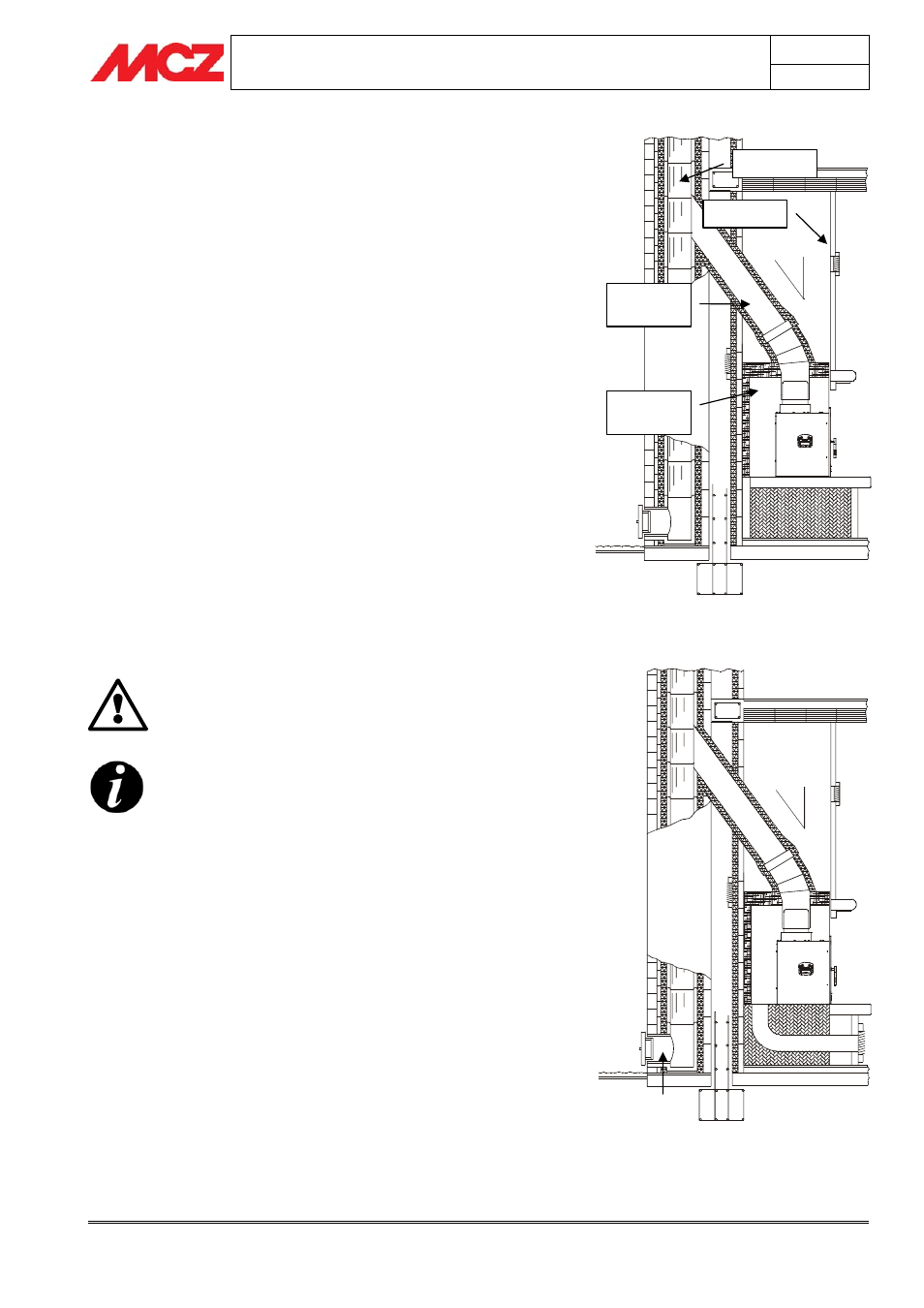Connection to the flue pipe, Chimney flue – MCZ Boxsystem 75 FR User Manual
Page 8

Chapter 2
INSTALLATION AND USE MANUAL
page
8
Theoretical concepts for installation
Technical service - MCZ S.p.A. all rights reserved - Reproduction prohibited
2.4. CONNECTION TO THE FLUE PIPE
The connection to the flue pipe is a very important element. The
connection must be made with great care and attention, because it will
be very difficult to correct any construction anomalies or errors without
damaging the hood. The connection is also made in a part of the
fireplace where temperatures are very high, and thus it is important to
use heat-resistant materials that are also resistant to the acidity of the
fumes produced by combustion.
Before beginning work it is necessary to pay attention to the following
points:
• The connecting pipe must have a maximum slope of 45
degrees. This is to avoid excessive deposit of condensation
produced in the initial phases of lighting the fireplace heating
system and/or the excessive accumulation of creosote. It also
avoids slowing down the evacuation of fumes.
• The connections must be metallic in aluminium-clad
steel with minimum thickness 20/10 or in stainless
steel 316 with minimum thickness 10/10. The use of
flexible pipes in stainless steel or aluminium is
prohibited because it compromises the safety of the
connection itself. Flexible pipes are liable to split or
crack, causing leakage of smoke.
• The components making up the connecting pipe must be
perfectly sealed.
• The joint to the flue pipe must not be too long (to avoid
obstructions), nor too short (to avoid smoke leakage).
If metal connecting pipes are used, it is essential
that they be insulated with suitable material such as
ceramic fibre matting in order to avoid deterioration
of the walls and the decorative hood.
IMPORTANT!
Any increase in the section of the connecting pipe
must be made immediately above the hood of the
insert and not part-way along the flue pipe.
2.5. CHIMNEY FLUE
The chimney flue is a fundamental element in discharging smoke
and therefore must have the following requisites:
•
It must be waterproof and thermally insulated.
•
It must be made with suitable heat-resistant materials that are
also resistant to combustion products and any condensation.
•
It must have a vertical slope with axis deviations not over 45°
and without narrowing.
•
It must meet the requisites indicated in the technical table for
the internal chimney section and height.
•
It must preferably have a circular interior section.
•
If pre-existent and previously operative, it must be clean.
Illustration of a correctly constructed
chimney flue with a chamber and sealed
door for solid combustion product collection
and discharge at the foot of the external
ascending segment.
Flue gas
connection
Ceramic fibre
insulation
Flue pipe
Hood grille
Example of insert connection
Max 45°
